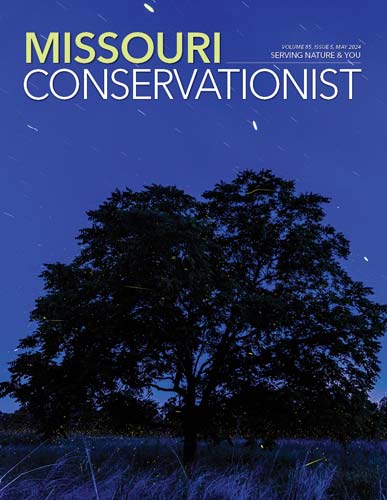Agents of Discovery
Discover nature through outdoor missions with this fun app
Discover nature this spring through the Agents of Discovery mobile gaming app’s spring missions. Agents of Discovery is an educational gaming app that allows users to engage with nature while completing missions or games — proving that screen time can be green time. Each mission consists of educational challenges that teach players about local history, culture, ecosystems, and safety. Missions include prizes to reward “agents” or players who participate. Once an agent completes a mission, they can earn stickers, pins, and other prizes.
These MDC locations have new spring missions:
- Springfield Conservation Nature Center: Water Wonders mission to discover plants and animals that live near water along the nature center’s Boardwalk Trail.
- Powder Valley Conservation Nature Center (Kirkwood): Spring Swing to explore wildlife behaviors and plant growth that signal spring.
- Cape Girardeau Conservation Nature Center: Swamp Stroll to explore the natural beauty and hidden wonders of Wood Duck Swamp.
- Runge Conservation Nature Center (Jefferson City): Wildlife Wake-Up to learn what animals do in spring.
- The Anita B. Gorman Conservation Discovery Center (Kansas City): Spring Splendors to look for signs of spring.
Join by downloading the free app and completing missions at participating locations. Agents of Discovery is available for download through the App Store or Google Play. For more information, visit agentsofdiscovery.com.
Thank You for Sharing the Harvest
MDC and the Conservation Federation of Missouri (CFM) thank the thousands of Missouri deer hunters who donated 247,575 pounds of venison to the state’s Share the Harvest program this past deer season, including 5,394 whole deer.
MDC and CFM also thank the participating meat processors throughout the state who grind the donated deer meat into ready-to-use packages, and the many sponsors who financially support the program. The donated deer meat goes to local food banks and food pantries to help feed hungry Missourians all around the state. Meat-processing fees are covered entirely or in part by numerous local sponsors, along with statewide sponsors that include Shelter Insurance, Bass Pro Shops, Feeding Missouri, and MDC.
Share the Harvest is coordinated by MDC and CFM and has been helping feed hungry Missourians for more than 30 years. Since 1992, it has provided about 5 million pounds of lean, healthy venison to help feed hungry Missourians. To get Share the Harvest venison, contact local food banks or food pantries.
For more information on Share the Harvest, visit CFM at short.mdc.mo.gov/4Mk.
Deer Management
MDC and the National Deer Association (NDA) invite landowners and others interested in managing deer on their properties to join our free 2024 Missouri Deer Management Webinar Series via Zoom.
Save the links and click on them at the date and time to join the free, live Zoom webinars. For those who have not previously used Zoom, click the links ahead of time and follow the prompts to install the free software.
- May 28 at 6 p.m. — Reducing Deer Damage to Crops at short.mdc.mo.gov/4Xi.
- July 30 at 6 p.m. — Invasive Plant Control for Deer Management at short.mdc.mo.gov/4XS.
- Sept. 10 at 6 p.m. — Hemorrhagic Disease in Deer at short.mdc.mo.gov/4Xq.
Learn more about deer management at short.mdc.mo.gov/4XC.
Apply for Elk and Bear Permits
Hunters interested in pursuing black bear and/or elk in Missouri this fall need to apply for a limited number of permits in May.
MDC will again offer 400 permits for the taking of a maximum of 40 black bears during the 2024 Missouri black bear hunting season this fall, Oct. 14–23. Get more information and apply during May at short.mdc.mo.gov/4Xv.
MDC will again also offer five permits to hunt bull elk in Missouri this fall with at least one permit designated for qualifying landowners who own property in Carter, Reynolds, or Shannon counties and the remaining permits for qualifying residents. MDC has designated the elk archery portion to run Oct. 19–27 and the elk firearms portion to run Dec. 14–22. The five permits will be for bull elk with at least one antler being 6 inches or greater in length and will be valid for both portions. Get more information and apply during May at short.mdc.mo.gov/4BZ.
Only Missouri residents who will be at least 11 years of age by the first day of the hunt for which they are applying are eligible to apply for bear and elk permits during the application period of May 1–31. All permits will be assigned through a random drawing.
Be Bear Aware
Black bears are out and about looking for food, especially in the southern half of the state. MDC encourages you to Be Bear Aware by staying safe in bear country and keeping our bears wild by not feeding them.
Never feed a bear! Feeding bears makes them lose their natural fear of humans and teaches them to see humans as food providers. They will learn to go to places such as homes, campsites, and neighborhoods to look for food, instead of staying in the forest. A bear that has gotten used to getting food from humans may become aggressive and dangerous. When this happens, the bear has to be destroyed. A fed bear is a dead bear. Learn more about how to Be Bear Aware at short.mdc.mo.gov/4de.
World-Record Paddlefish
Congratulations to first-time snagger Chad Williams of Olathe, Kansas, for snagging a world-record 164-pound, 13-ounce paddlefish at the Lake of the Ozarks on March 17. The fish broke the previous state record of 140 pounds and the previous world record of 164 pounds. Learn more at short.mdc.mo.gov/4XF.
Avery Crisp
Carter County
Conservation Agent
Memorial Day is summer’s unofficial kickoff, and we are drawn to water like moths to a flame. Black bass season opens at the end of the month. Be sure you are ready not only with the proper gear but with the appropriate permits and knowledge of regulations and limits. If boating and floating is your thing, know the rules of water safety before you head out. Be courteous to others and know the waterway you are navigating. Have a plan and let someone know your plan. Always pick up trash and pack out what you bring in. Be safe on the water and let’s make it a great summer!
Chuck-will’s-widows
By Kristen Heath-Acre
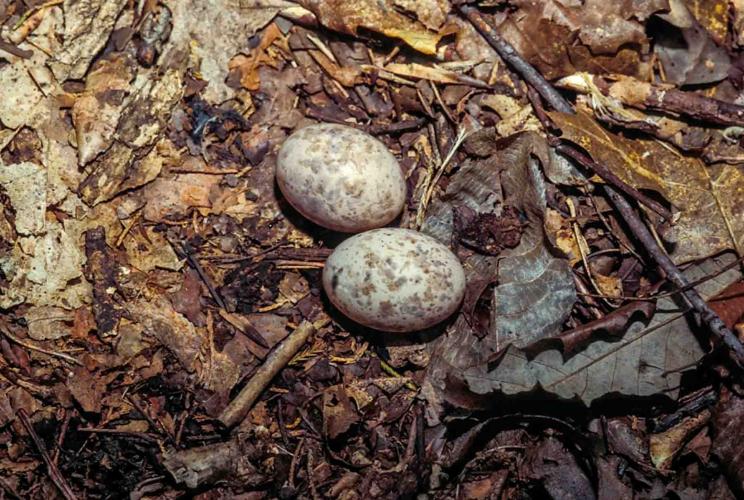
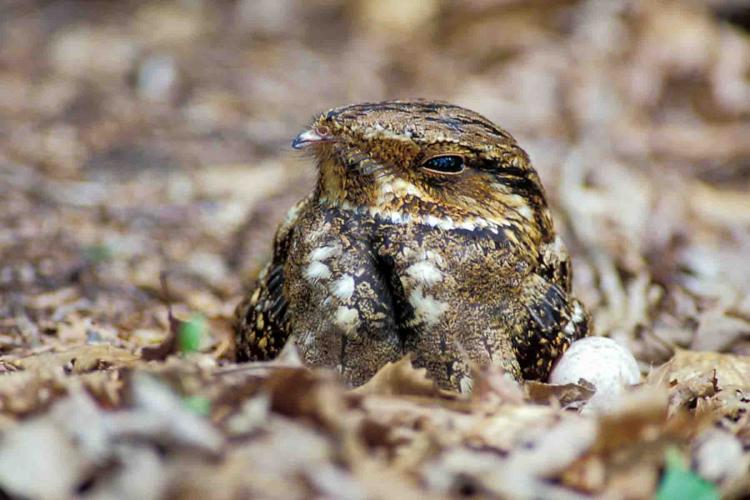
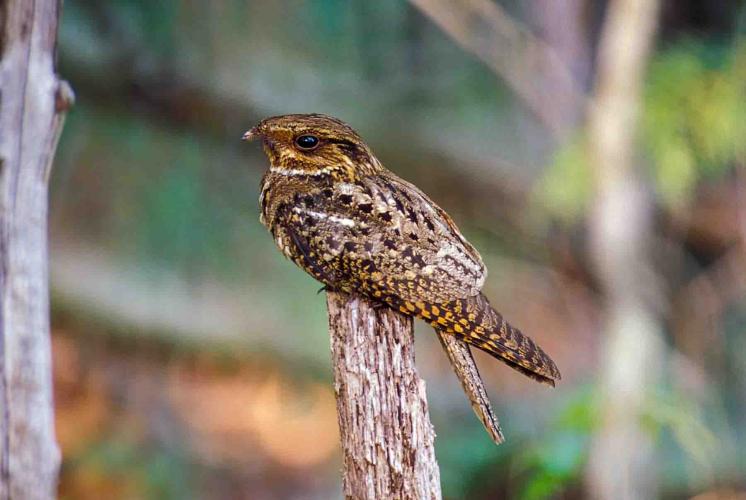



Chuck-will’s-widows are a species of bird in the family known as “nightjars.” Nightjars have long, pointed wings and easily maneuver in the air to capture insects on the wing, typically at dawn and dusk.
Chuck-will’s-widows are found primarily in open pine-oak or cedar-oak forest and forest edges. Their distinctive song — chuck-will’s-WID-ow — is commonly heard in the Missouri Ozarks region during spring and summer. They become less common as you move northward towards the plains region of Missouri.
Why It’s Imperiled
These remarkable birds have declined 63 percent across their range since 1970. Causes of these declines likely include habitat loss due to land conversion and possible loss of target prey due to pesticide usage.
MDC Restoration Efforts
MDC woodland management on conservation areas, which can include timber thinning and prescribed fires, maintains forest clearings, opens canopy cover, and opens understory for nightjars to forage and nest in.
What Can You Do?
Help protect forest clearings, forest edges, and woodlands on your property and maintain down and dead wood. Avoid using pesticides where possible and consider prescribed fires to open up the understory.
Questions regarding cost-share programs can be directed to the private land conservationist in your county (see Page 2 for phone numbers) or at local USDA Service Centers.
Ferruginous Carpenter Ant
The ferruginous carpenter ant, commonly known as the red carpenter ant, is named for its propensity to build nest tunnels in rotting and decaying logs. They do not eat the wood, however, like termites. In the absence of wood, carpenter ants will tunnel in cracks and crannies of houses. These species are large, growing up to three-quarters of an inch in length.
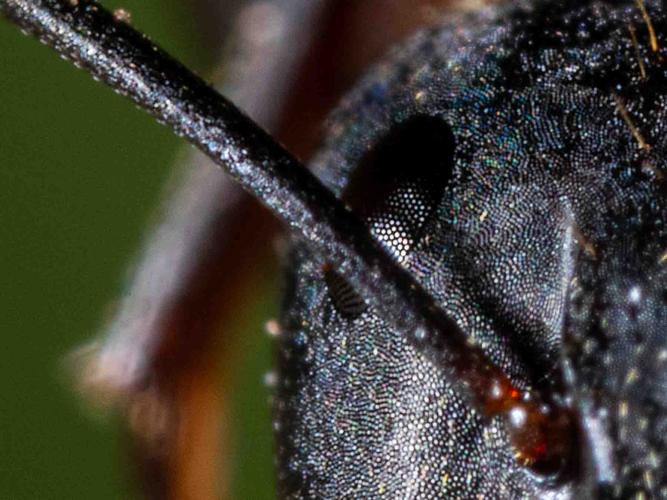
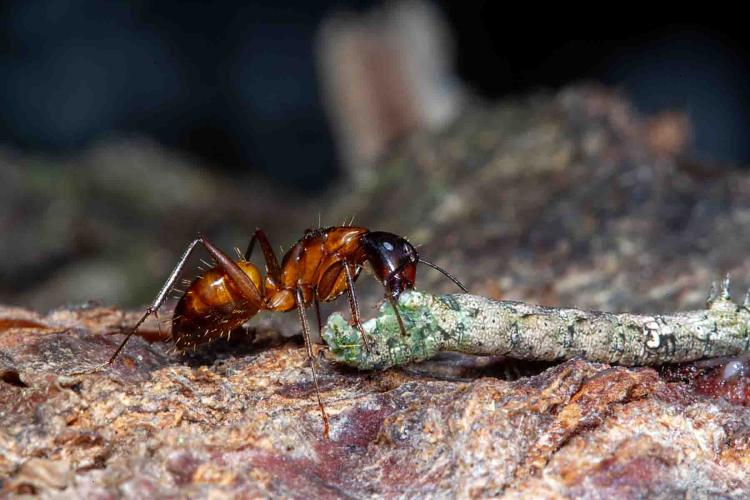


And More...
This Issue's Staff
Editor - Angie Daly Morfeld
Associate Editor - Larry Archer
Photography Editor - Cliff White
Staff Writer - Kristie Hilgedick
Staff Writer - Joe Jerek
Staff Writer – Dianne Van Dien
Designer - Shawn Carey
Designer - Marci Porter
Photographer - Noppadol Paothong
Photographer - David Stonner
Circulation – Marcia Hale






















